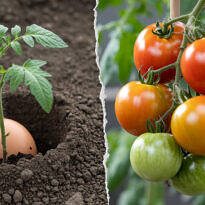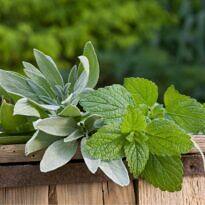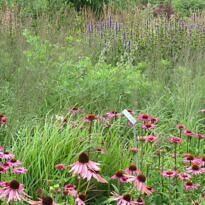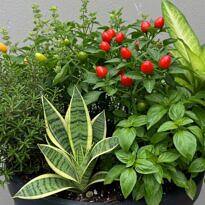
When it comes to establishing a new lawn, the question always arises: What’s the best way to do it? Should we choose sod rolls, seeds, or plugs? In this article, we’ll explain the main advantages and disadvantages of each method to help you make this important decision. Additionally, find tips for planting and initial maintenance for the different methods.
Planting with Sod Squares or Rolls
This is the fastest and most practical method. Sod Rolls are widely available and can accommodate almost all common types of grass. This allows you to plant varieties like St. Augustine, Bermuda, Kentucky Bluegrass, and more. Furthermore, you’ll get a lush green lawn on the same day of planting. It requires low “establishment maintenance” since the rolls tightly cover the soil, making it harder for weeds to emerge. For slopes and areas prone to erosion, sod roll or square planting is the preferred method, preventing soil runoff or gullies while the grass establishes itself. Despite its many merits, this method is considered the most expensive.
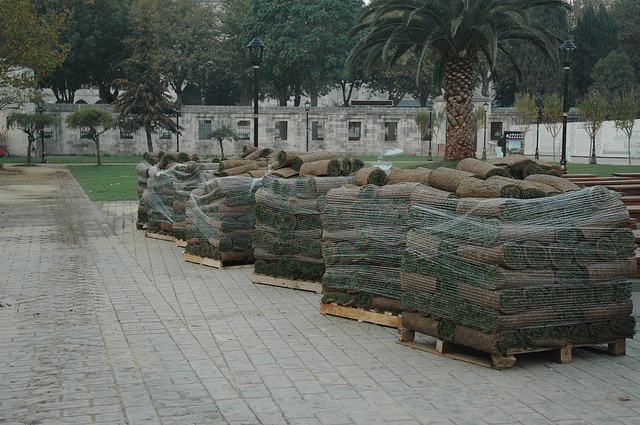
When using sod, depending on the distance between the producer and the planting location, there’s a risk of rolls suffering during transportation, potentially fermenting or yellowing due to lack of light. In such cases, it’s beneficial to lay the rolls in the sun and water them well, allowing them to recover for two days before planting. Another common issue is grass death due to dehydration, especially if planting is done under hot sun, with inadequate irrigation or placement errors. Air pockets between the rolls and the soil are detrimental. This problem can be resolved by firmly pressing the grass during planting. A roller compactor is essential for large fields, while a simple mallet suffices for small gardens.
Minor unevenness might appear after planting, making the joints between the rolls visible. Choosing a reputable supplier and proper planting execution can prevent this issue, which tends to diminish over time and can be corrected if necessary. Sod planting is the choice for small to medium-sized residential or commercial gardens that seek speedy results. Medium to large gardens can also be established using rolls if the budget permits.
When planting sod rolls, ensure the soil is well tilled, perfectly leveled, and well-draining. Irregularities like mounds or holes can be rectified after placement, but prevention is easier than correction. Fit the rolls like a puzzle, resisting the temptation to leave gaps between the larger rolls. This false sense of economy harms the final lawn quality. If needed, apply medium sand to joints and gaps. Compacting the rolls ensures intimate contact between the rolls and the soil, preventing air pockets.
Planting with Plugs or Seedlings
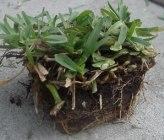
Plugs are small rooted grass seedlings, produced in disposable trays with special substrate. They’re particularly suitable for extensive lawns, such as golf courses, polo fields, or football fields. Their implementation cost is lower compared to sod. Another advantage of this method is avoiding soil contamination from the grass rolls, which tends to be clayey. This is crucial for sports fields where drainage must be optimal.
The main limitation for the success of this planting method is water availability for irrigation. Due to their small size and exposed soil, evaporation is high, making water requirements substantial. Before planting a lawn using this method, proper irrigation must be planned, whether automated or manual. Irrigation is daily and, on extremely hot days, can be two or three times per day.
Another significant consideration for plug planting is weed control. In small gardens, manual weeding suffices, but for large areas, mechanical weeding and herbicide use are necessary.
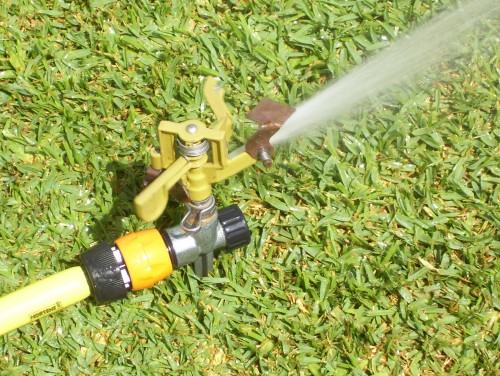
Plug planting is straightforward. Using a hoe handle, create small holes or furrows for placing the seedlings. The soil should be closely packed around the seedlings, ensuring intimate contact between the roots and the soil while avoiding air spaces. In extensive areas, a roller compactor aids in this process, accelerating the establishment of the seedlings and promoting a better final lawn level. The spacing between seedlings is 20 to 30 cm, and complete lawn coverage can take 3 to 5 months with intensive care. Applying pre-emergent herbicides during this phase is important, as the exposed soil is prone to weed contamination. Fertilization should be weekly or bi-weekly using quick-release fertilizers.
The first mowing should be done 20 days after planting. This breaks the apical dominance of the seedlings, promoting the growth of stolons, rhizomes, or tillers, depending on the species, thus accelerating lawn coverage.
Another type of available seedling on the market is called “Sprigs.” Sprigs are grass seedlings without substrate. They appear as a tangle of grass. They’re suitable for a few hardy species like Bermuda grass. Planting and managing a lawn using sprigs is similar to plug planting, with the difference that care and irrigation are even more intensive as the grass is not yet rooted. The time required for lawn establishment is longer, but the final result is as good as other planting methods, with the advantage of lower costs.
Planting with Seeds
The major disadvantage of planting with seeds is the limited number of species and varieties available in Brazil. The species on the market are more suitable for sports fields, with less focus on ornamental gardens. Contrary to appearances, this planting method demands specialized techniques in soil preparation, fertilization, pesticide application, irrigation, and planting. Any mistake in these aspects carries significant weight in the final outcome, potentially irreversibly affecting the future lawn.

However, it’s the most cost-effective method. The low cost of seeds and shipping is appealing. The money saved should be invested in excellent soil preparation and hiring a specialized agronomist as well as renting necessary machinery.
Tips for Any Planting Method:
- Choose the Right Season: Regardless of the method you select, opt for planting during the spring season and on days when the sky is overcast. This timing allows your lawn to capitalize on the warmer months for vigorous growth and establishment before entering a slower growth phase in the fall and winter.
- Consistent Mowing: Irrespective of the chosen approach, maintain a regular mowing routine that aligns with the recommended mowing height for the specific grass species you’ve planted. This consistent mowing not only enhances the appearance of your lawn but also encourages healthy root development.
- Topdressing Application: After the initial mowing (in the case of sod rolls) or once your lawn has established itself (for plugs or seeds), consider applying a layer of topdressing. Topdressing involves spreading a thin layer of a balanced mixture, often consisting of 80% medium-grade sand and 20% nutrient-rich topsoil or compost. This topdressing helps in leveling the surface, filling small gaps, and promoting optimal soil conditions for your grass to thrive.
- Proper Watering: Adequate and consistent irrigation is vital during the early stages of lawn establishment, regardless of the planting method you’ve chosen. Watering helps the newly planted grass establish roots and ensures the survival of plugs or seeds. After about 3 to 4 months, gradually reduce the frequency of watering sessions. This encourages the roots to grow deeper, making your lawn more resilient to periods of drought.
- Weed and Pest Control: Vigilance against weeds and pests is crucial throughout the establishment phase. Depending on the scale of your lawn, manual weeding may suffice for small areas, while larger spaces may require mechanical weeding methods or the application of suitable herbicides. This proactive approach prevents competition for resources and safeguards your lawn’s health.
- Fertilization Strategy: Implement a well-structured fertilization schedule that aligns with the specific needs of your grass species. Weekly or bi-weekly applications of quick-release fertilizers can help boost initial growth and overall lawn health. However, it’s essential to strike a balance; excessive fertilization can lead to quick but weak growth and potential vulnerability to diseases.
- Initial Trimming: Shortly after the establishment phase, perform a gentle trimming, especially for sod rolls or plugs. This practice breaks the dominance of the main shoot, prompting lateral growth through stolons, rhizomes, or tillers, depending on the grass species. This lateral growth contributes to a denser and more even lawn coverage.
- Professional Assistance: Regardless of the method you choose, don’t hesitate to seek guidance from professionals, such as agronomists or lawn care experts. Their insights can prove invaluable in navigating the challenges and nuances of establishing a healthy and vibrant lawn.


